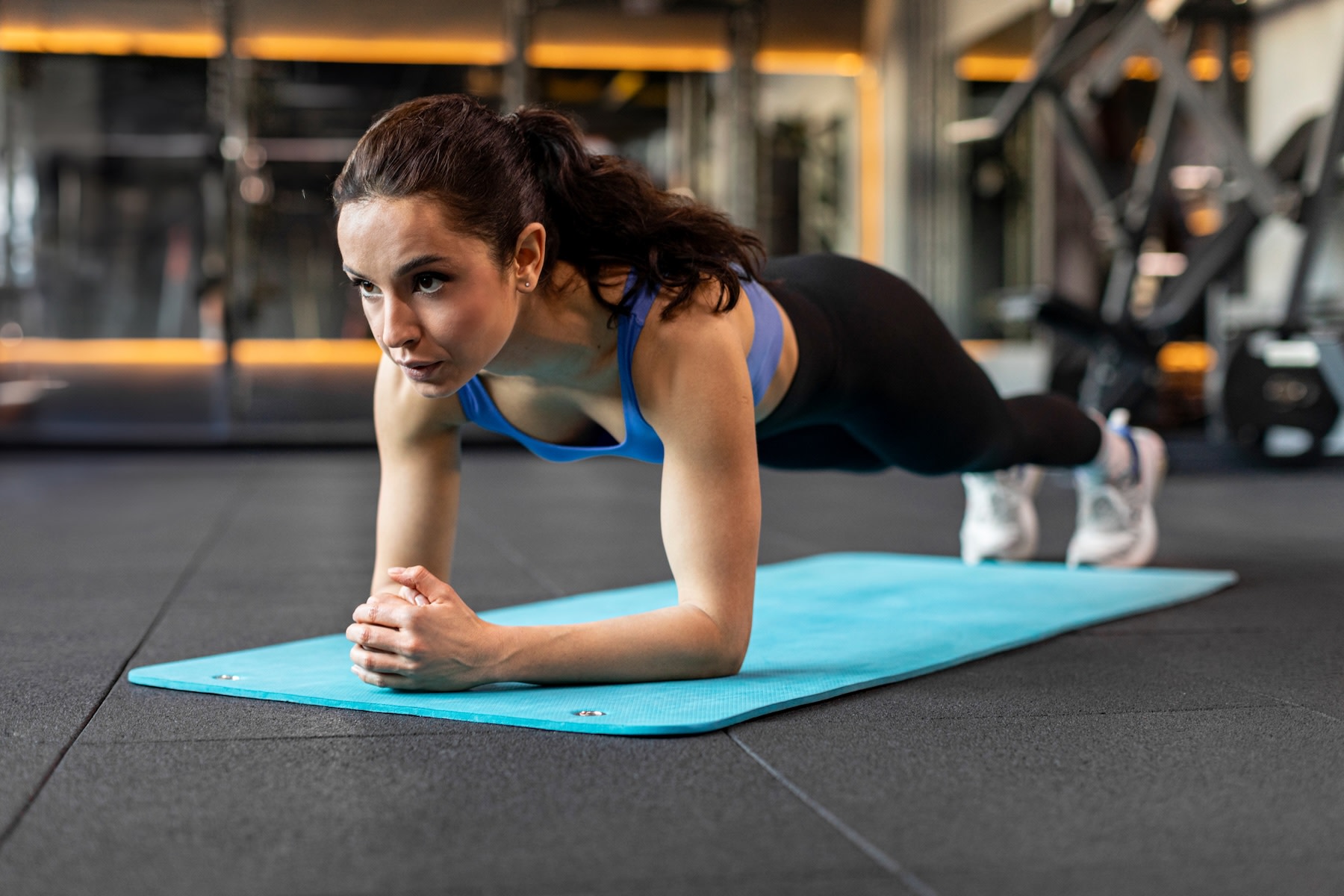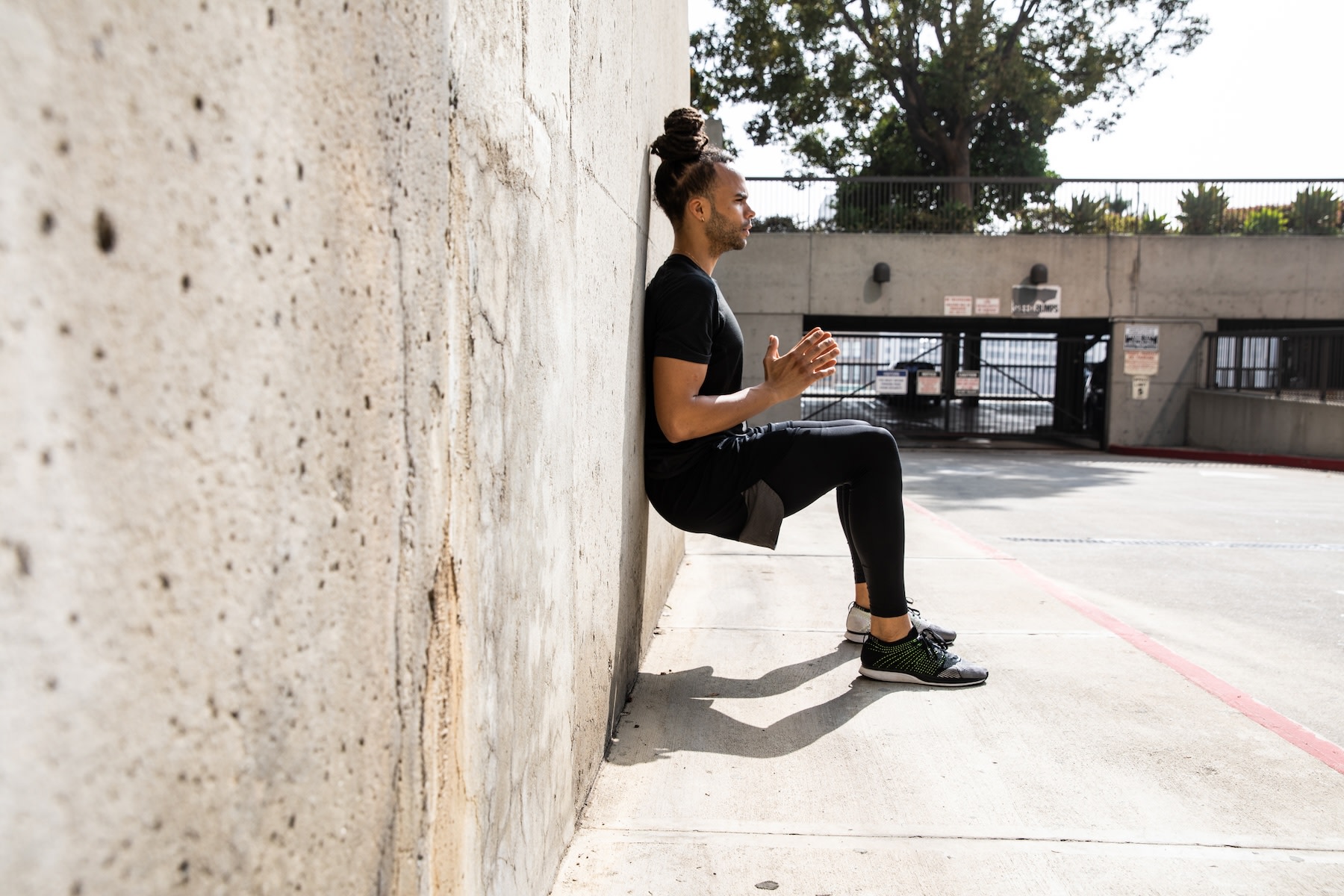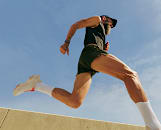
Olena Miroshnichenko / iStock / Getty Images Plus via Getty Images
Why Your Muscles May Shake During a Workout (and What to Remember When It Happens)
Are those mid-workout trembles a sign to slow down or keep pushing? We asked the experts.
By Kathleen Ferraro•
Why Your Muscles May Shake During a Workout
Is It Normal If Your Muscles Are Shaking During a Workout?
What to Do If Your Muscles Start Shaking During Exercise
Can You Prevent Your Muscles from Shaking During a Workout?
When Muscle Shaking Might Be a Red Flag
The Takeaway
You’re in the middle of a tough workout, holding a deep squat or pushing through the last few reps of a challenging strength training set, when suddenly, your muscles start to tremble. That uncontrollable shaking can be surprising, even alarming, but it’s actually a common response to strenuous exercise. Whether you’re taking a Pilates class, lifting weights, or on a long endurance ride, muscles shaking during a workout is often a signal that your body is working hard.
Discover more ways to reach your goals with Peloton
But what exactly causes this shaking? Is it a sign that your muscles are getting stronger, or is it a red flag that you should ease up? Understanding the causes of muscle tremors during exercise can help you better interpret your body’s signals and adjust your training for optimal performance and safety.
Muscle shaking can occur for several reasons, from simple fatigue to more complex neuromuscular adaptations. Below, experts break down what may be causing those muscle tremors, whether or not your shaking is normal, and how to deal with it.
Why Your Muscles May Shake During a Workout
It’s not unusual to notice your muscles shaking during a workout, especially if you’re trying out a new exercise or increased resistance. Here are the most common reasons why you may experience tremors during exercise.
1. Muscle Fatigue
According to Berkcan Akpinar, MD, a sports orthopedic surgeon at NYU Langone Health, this phenomenon is typically due to muscle fatigue, which is when your muscles aren’t able to produce as much force after being worked beyond their capacity.
When you exercise, your muscles rely on energy stores such as glycogen (aka stored carbs) to power your movements, Dr. Akpinar says. As you continue exerting yourself, these stores can deplete, eventually leaving your muscles without the adequate fuel. This can sometimes result in the trembling sensation many people experience toward the end of a challenging move or set.
2. Muscle Imbalances
Similarly, strength imbalances between your muscles can also contribute to muscle fatigue and shaking, according to Peter Schultz, a physical therapist and founder of Dynamic Sports Physical Therapy.
“We commonly see this when the smaller stabilizing muscles can’t keep up with the stronger primary muscles,” he says. For instance, in a bench press, your large pectoral muscles may be strong enough to handle the load, but smaller, weaker scapular and rotator cuff stabilizing muscles may fatigue sooner, leading to noticeable tremors.
3. Electrolyte Imbalances
Electrolyte imbalances can also contribute to muscle tremors, Dr. Akpinar says. Electrolytes are minerals like sodium, magnesium, potassium and calcium that are essential for proper muscle function and other key physiological processes. And, according to the Cleveland Clinic, when your electrolyte levels are out of whack, you may experience muscle cramping, spasms, weakness—and yup, mid-workout shakiness.
Dehydration—whether from not drinking enough fluid during your workout or sweating excessively—is one common cause of electrolyte imbalance that can lead to muscle shakes, per the Cleveland Clinic. On the flip side, drinking too much water can dilute your electrolyte levels and lead to muscle problems.
4. Neuromuscular Adaptation
When you perform an exercise or try a type of activity that your body isn’t yet accustomed to—say, holding a Pilates teaser or forearm plank for the first time—your nervous system needs to recruit more muscle fibers to complete the movement. And activating these additional muscle fibers can sometimes cause shakiness, according to the American Council on Exercise.
5. Joint Instability
Unstable joints can also play a role in muscle shakiness. In particular, people with hypermobility (that’s when your joints are extra flexible) or poor neuromuscular control and stability (which can be the case if you have an underlying condition like ALS, multiple sclerosis, or muscular dystrophy) may notice muscles shaking during a workout, according to Schultz.
“When someone’s joints are unstable, the muscles may shake to contract and try to stabilize that particular joint,” he says. Put simply: This involuntary response helps compensate for the lack of structural stability.

LeoPatrizi / E+ via Getty Images
Is It Normal If Your Muscles Are Shaking During a Workout?
Experiencing mild muscle tremors during and after a workout is completely normal and very common, Dr. Akpinar says. This is particularly true for activities that engage your fast-twitch muscle fibers, like high-intensity interval training or plyometric training, he adds.
However, “[shaking] is more common when you’re overtraining, not taking enough rest days, or if you neglect to train your core and stability muscles,” Schultz says.
In other words, while some shaking during high-exertion exercise is typically nothing to be concerned about, regularly experiencing muscle tremors could be a sign that you’re pushing your body too hard, too fast.
Schultz also warns that if shaking occurs during lower-intensity workouts where you wouldn’t typically expect it (think: light jogging or walking), it could be a sign of overtraining or inadequate rest. Overtraining can lead to muscle pain, fatigue, decreased performance, and a heightened risk of injury, which is why it’s essential to listen to your body and regularly incorporate rest days into your fitness routine, per the Cleveland Clinic.
Low blood sugar levels, dehydration, and poor pre-workout nutrition can also contribute to trembling, Dr. Akpinar says. While these aren’t uncommon issues, it’s critical to properly fuel before, during, and after your workout to help prevent them.
What to Do If Your Muscles Start Shaking During Exercise
While some muscle shaking during exercise can be normal, should you push through it or take a break? The answer ultimately depends on the intensity of the tremors, Schultz says.
“A little shaking is OK and may indicate you are exercising effectively,” Dr. Akpinar says. For instance, if your core starts to tremble during a long Pilates hold, it’s not necessarily a reason to stop (as long as you’re not experiencing additional symptoms like dizziness, lightheadedness, or chest pain).
However, if the shaking becomes more intense (think: shaking that starts to interfere with your form), it’s a sign to dial it back. Schultz recommends slowing down your activity or reducing the intensity of the current exercise to decrease or stop the shaking.
In some cases, though, muscle shaking can be a sign that you need to end your workout altogether. “If [shaking] persists or worsens over the next few minutes after you decrease intensity, I would recommend that you stop that activity for the day,” Schultz says.
This can be a sign that you’re overtraining, pushing your muscles to an unsafe degree, Schultz adds. And overexerting fatigued muscles can make it difficult to maintain proper form, which increases your risk for muscle and joint injuries, according to the Mayo Clinic.
“Pain should be your guide. If the shaking becomes associated with painful cramping, your best bet is to pause the workout,” Dr. Akpinar notes. “Lightheadedness and feeling like you’re going to pass out are warning signs to be cognizant of as well. If you feel these symptoms, stop the workout. Exercise safety is critical to having a successful session at the gym.” These are all signs that you may be experiencing low blood sugar, dehydration, or an electrolyte imbalance, all of which can jeopardize your safety.
Additionally, if you notice muscle shaking during activities that don’t typically induce it, like walking or jogging, consider whether you’re adequately fueling and hydrating before workouts, Dr. Akpinar says. (More on that below.)
Can You Prevent Your Muscles from Shaking During a Workout?
Some shaking from muscle fatigue is unavoidable during a challenging workout. But there are strategies to minimize its occurrence or prevent tremors altogether:
Stay hydrated: Keeping your electrolytes in balance by adequately hydrating before, during, and after your workouts can help you avoid shaking and uncomfortable muscle cramps or spasms, according to the Cleveland Clinic. If you’re doing activity that causes you to sweat excessively, sipping an electrolyte drink throughout can help keep your levels in check.
Fuel properly: Remember, low blood sugar can exacerbate shaking, so increasing your glycogen stores by eating a carbohydrate-rich snack or meal (such as fruit, toast, or a granola bar) before you work out is essential, Dr. Akpinar says.
Prioritize recovery: Ensure adequate rest between sets and incorporate regular recovery days into your fitness routine to prevent overtraining and overuse injuries, Schultz says.
Strengthen stabilizing muscles: Incorporate core exercises and stability training to build endurance in those smaller muscle groups, Schultz says. This will help you better protect your joints and support those bigger lifts, which may help fend off mid-workout shakes.
Gradually increase intensity: Incrementally increase the intensity or duration of your workouts to give your body time to adapt, according to the Mayo Clinic.
When Muscle Shaking Might Be a Red Flag
Although muscle shaking is generally harmless, certain symptoms can warrant concern. If your tremors are accompanied by lightheadedness, shortness of breath at rest, dizziness, chest pain, or uncontrollable seizing, this is a red flag that you’re experiencing something more serious than muscle fatigue, Dr. Akpinar says. For instance, you may be dealing with severe dehydration or low blood sugar, according to Schultz.
Additionally, persistent shaking that doesn’t subside after your workout could be linked to an underlying neurological condition such as Parkinson’s disease or multiple sclerosis. “Shaking after a strenuous workout will typically improve within a few hours, whereas tremors in [neurological conditions] persist much longer and typically need medication to be controlled,” Schultz explains.
Shaking accompanied by pain and cramping can also be a sign of overexertion, which can lead to injury, says Dr. Akpinar. Additional symptoms like swelling, weakness or joint immobility may also signal a more serious issue such as muscle strain or an overuse injury, according to the National Institute of Arthritis and Musculoskeletal and Skin Diseases.
In any of these cases, it’s a good idea to consult your doctor to diagnose the problem and determine the best course of treatment.
The Takeaway
Muscle shaking during a workout is a common response to fatigue, increased muscular exertion, and improper fueling or hydration. Mild shaking generally isn’t cause for concern. However, you should monitor more frequent or extreme tremors, especially if they occur unexpectedly during low-intensity workouts or are accompanied by other concerning symptoms like dizziness, chest pain, or shortness of breath. Listening to your body, incorporating enough recovery days, and ensuring adequate hydration and nutrition can help keep shaking at bay while allowing you to continue challenging your muscles safely and effectively.
This content is for informational and educational purposes only and does not constitute individualized advice. It is not intended to replace professional medical evaluation, diagnosis, or treatment. Seek the advice of your physician for questions you may have regarding your health or a medical condition. If you are having a medical emergency, call your physician or 911 immediately.
Get our latest health stories straight to your inbox
Enter your email to get articles, expert-backed tips, and updates from Peloton sent to your inbox.
By providing your email address, you agree to receive marketing communications from Peloton.
For more about how we use your information, see our Privacy Policy.












